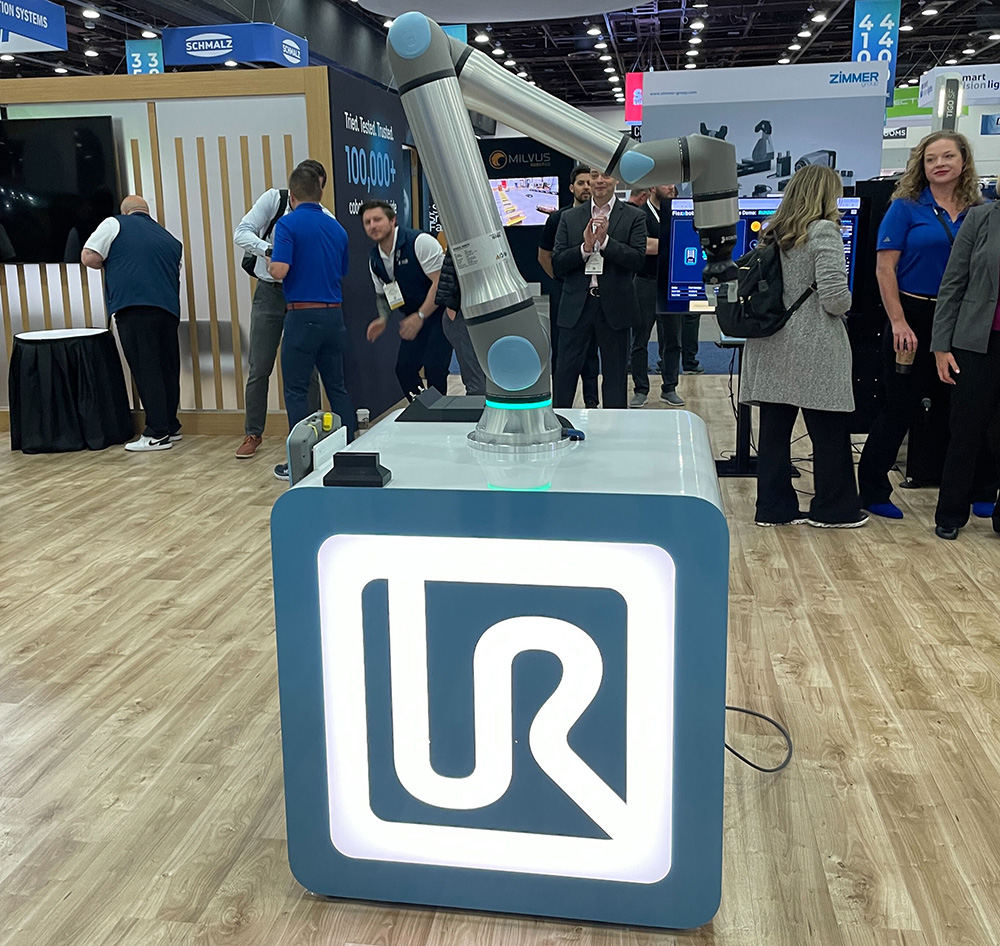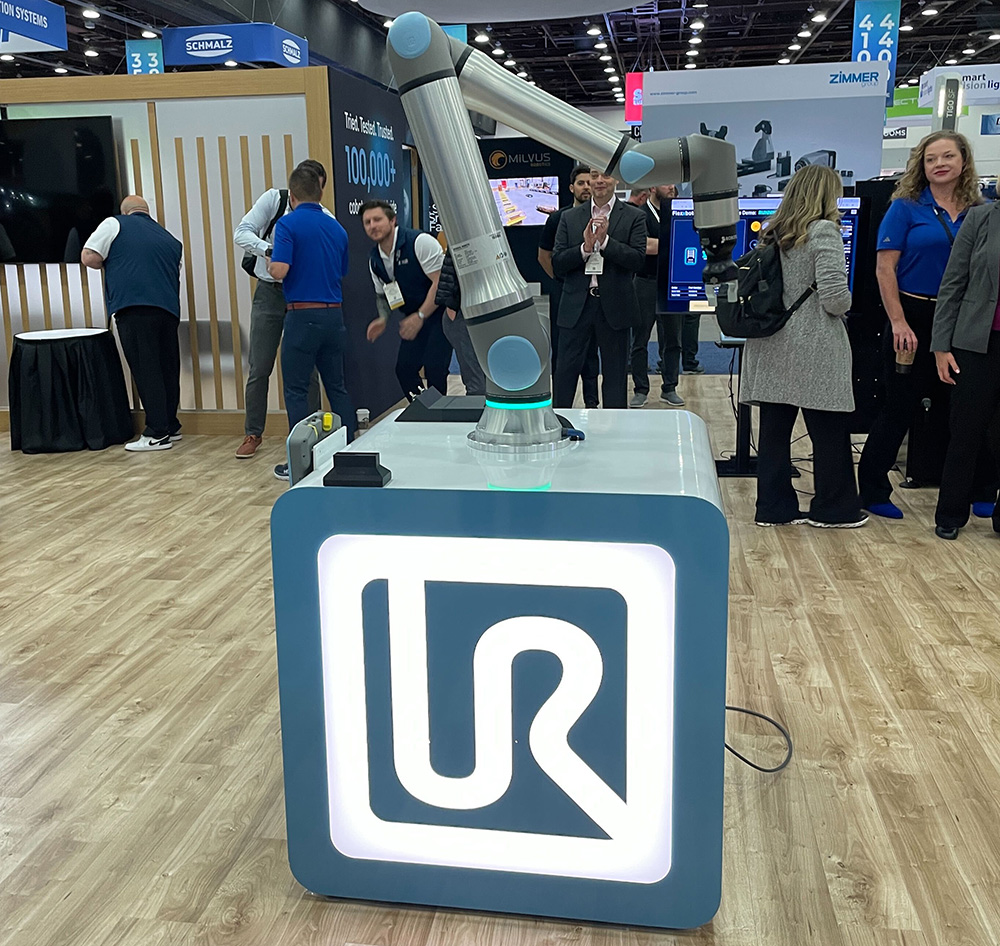
Universal Robots introduced its fastest cobot ever, the UR15, earlier in 2025. | Source: The Robot Report
Teradyne Robotics, which includes collaborative robot arm leader Universal Robots (UR) and autonomous mobile robot (AMR) developer Mobile Industrial Robots (MiR), reported $75 million in revenue for the second quarter of 2025. The figure marks a 9% increase from Q1 2025, but a 17% decline year-over-year.
UR remained the primary moneymaker by bringing in $63 million, or 84% of the group’s revenue for the quarter. MiR generated $12 million. The year-over-year decline reflects ongoing challenges in the global automation market, Teradyne CEO Greg Smith said in an earnings call. These challenges include extended sales cycles and cautious capital spending in key manufacturing sectors.
For the first quarter of 2025, Teradyne said its robotics revenue was $69 million. This was down from $98 million in Q4 2024.
Earlier this year, Teradyne Robotics laid off approximately 10% of its workforce, citing the need to align operations with market conditions. The group has also undergone leadership transitions at both UR and MiR, moves Teradyne said are aimed at sharpening strategic focus and improving execution across both businesses.
The total revenue for Teradyne’s robotics group in 2024 was $365 million, with UR contributing $293 million and MiR $72 million.
“Recall that we executed a structural reorganization that consolidated the customer-facing sales, marketing and service organizations of UR and MiR in the first quarter of 2025,” said Smith. “In Q2, this new organization delivered 9% quarter on quarter growth, despite persistent difficult market conditions, and we continue to optimize our OPEX envelope to respond.”
Smith said that as part of its strategy to attract large customers, Teradyne Robotics “secured a plan of record decision” from a major company. He did not disclose the customer’s name or specify whether the deal involved UR, MiR, or both. He said this deal is expected to be a “significant growth driver later in 2026.” Smith added that “the team” plans to open a manufacturing operation in the United States to best serve customers in this region.
In December, UR opened a production facility in China, with new models for that market, the UR7e and the UR12e. This is the first overseas production facility for Denmark-based UR and a major step to enhance its strategy in China, which has long been the world’s leading adopter of industrial robots. “We believe the Chinese market is turning the corner,” Teradyne Robotics noted at the time. “We believe that segment now values better-performing, quality ecosystem-based offerings, and we’re building on that hypothesis. We have big growth plans.”
The dominance of China’s robotics market will be a focus of RoboBusiness (Oct. 15-16 in Santa Clara), the premier event for robotics developers and produced by The Robot Report. Georg Stieler, head of robotics & automation at Stieler Technology & Market Advisory, will deliver a talk called “Global Implications of China’s Robotics Push” that will examine the key factors behind China’s momentum in robotics and AI, including market dynamics, current capabilities, and breakthroughs in next-generation systems. It will also explore the structural challenges still facing Chinese robotics companies, and how early-industrialized countries might respond to remain competitive. You can view the entire RoboBusiness agenda here.
“While the long-term drivers of AI and onshoring in advanced robotics remain intact, near-term macro factors continue to be a headwind,” said Teradyne CFO Sanjay Mehta. “Our second quarter operating results were better than the first quarter, and we expect the second half of the year to be better than the first half. Despite this, due to the weak end market we had lower volumes yielding a lower gross margin. We expect the weak market to persist and do not expect Robotics to break-even this year.”
Teradyne isn’t alone in navigating financial headwinds. Yaskawa, another major robotics provider, recently reported a 2.5% year-over-year revenue decline, citing the impact of foreign exchange rates. Despite the drop, Yaskawa noted continued global demand for automation, with large-scale automotive projects in South Korea and stronger general industrial sales in Japan helping to stabilize performance.
FANUC said sales for its Robomachine division dropped 24.2% quarter over quarter, while its Robo division dropped 7.1% quarter over quarter. ABB also reported softness in its Robotics and Discrete Automation business, pointing to delays in customer investment decisions tied to tariff-related uncertainty.
The post Teradyne Robotics generates $75M in Q2 appeared first on The Robot Report.

